 |
|
|
Cuchlaine King Laboratory
This laboratory provides research facilities for staff, postdoctoral research fellows and postgraduate students. It was substantially restructured in 2006. The laboratory is named after Cuchlaine King who was Professor of Physical Geography 1969-1982..
The main facilities are:-
Atomic absorption, UV-visible spectrophotometry and ion chromatography facilities are available to analyse the chemical composition of suitably pre-treated soil and sediment samples and water samples.
| A Perkin and Elmer Atomic Absorption Spectrophotometer and Argon Graphite Furnace is used for atomic absorption and flame emission Spectroscopy to measure exchangeable cations such as sodium, potassium, calcium, magnesium and heavy metal contaminants such as lead, cadmium, tin and nickel down to parts per billion. |
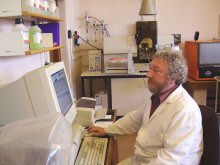 |
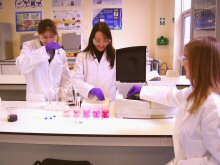 |
A Helios UV-visible spectrophotometeralso uses the technique of absorption in the UV or visible spectrum and is used mostly to determine nitrogen dioxide levels contributed by traffic in air pollution experiments. The absorption of light at a specific wavelength is measured as it passes through a coloured aqueous solution. |
| Metrohm Ion chromatogram is used for measuring cations and anions in water samples and soil extracts. |
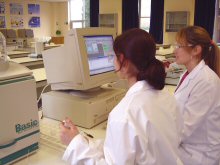 |
 |
A miniature rainfall, erosion and flume facility is used to demonstrate the features of hydrological systems. The system can be used to simulate the relationship between rainfall and run-off from catchment areas of varying permeability and the abstraction of ground water by wells, both with and without surface recharge from rainfall. Fluvial mechanic experiments in related topics such as river flow and sediment transport, initiation and characteristics of bed-load motion, general and local scour in open channel flow are also carried out. |
| A Bartington Magnetic Susceptibility Meter is used to measure the magnetic susceptibility of a variety of soils, sediments or cores. Magnetic susceptibility depends on the amount, type and particle size of the ferro-magnetic minerals present. |
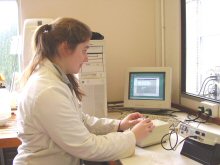 |
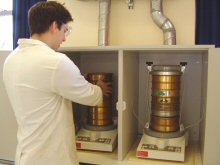 |
Sediment sieves and shakers to measure particles from gravel diameter 16mm down to fine sands of 63mm. |
| Beckman Coulter LS230 Laser Particle Size Analyser is used to measure the particle size distribution of fine soils and sediments from 2mm down to 0.4 microns. The laser analyser has both fluid and dry powder sample modules and data can be displayed in both table or graph form and exported to a spreadsheet. |
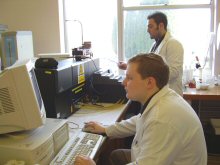 |
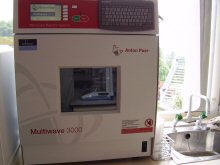 |
A Multiwave 3000 Microwave Digester is used to control temperature and pressure digests of soil, sediment and liquids for the preparation of chemical analysis. |
A 2400 series II CHNS/O Analyser offers multiple analysis options including Carbon (C), Hydrogen (H), Nitrogen (N), Sulphur (S), Oxygen (O) and (CHN or CHNS) analysis.
The 2400 series II retains automatic weight entry from an AD-6 Ultra Microbalance and offers flexible calibration procedures, internal storage of data and results, and the ability to recalculate any result-all under user selected microprocessor control. |
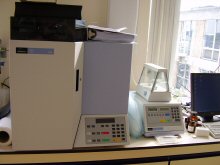 |
|
|





